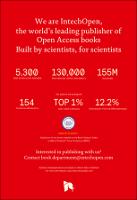Chapter Peripheral Nerve Reconstruction Using Enriched Chitosan Conduits
Author(s)
Ronchi, Giulia
Shahar, Abraham
Rochkind, Shimon
Reider, Evgeniy
Bitan, Yifat
Geuna, Stefano
Viano, Nicoletta
Koren, Akiva
Mandelbaum-Livnat, Mira M.
Morano, Michela
Ziv-Polat, Ofra
Biron, Tali
Language
EnglishAbstract
The repair of peripheral nerve traumatic lesions still represents a major cause of permanent motor and sensory impairment. In case of substance loss, a nerve guide should be used to bridge the proximal with the distal stump of the severed nerve. The effectiveness of hollow nerve guides is limited by the delay of axonal growth due to the absence of a regeneration substrate inside the conduit. To fasten up nerve regeneration, nerve guides should thus be enriched by a luminal filler. In this study, we investigated, in a 12-mm rat sciatic nerve defect experimental model, the effectiveness of chitosan-based conduits of different acetylation filled either with a hyaluronic acid gel (NVR gel) or with a magnetic fibrin hydrogel, in comparison with traditional autografts. Results showed that all types of artificial nerve conduits led to functional recovery not significantly different from autografts. By contrast, morphological and morphometrical analyses showed that the best results among nerve guides were found in medium degree of acetylation (DAII: ∼5%) chitosan conduits enriched with the NVR gel.
Keywords
peripheral nerve injury, chitosan guidance conduit, conduit acetylation, hyaluronic acid gel, magnetic fibrin hydrogelDOI
10.5772/intechopen.69882Publisher
InTechOpenPublisher website
https://www.intechopen.com/Publication date and place
2017Classification
Biomedical engineering


 Download
Download